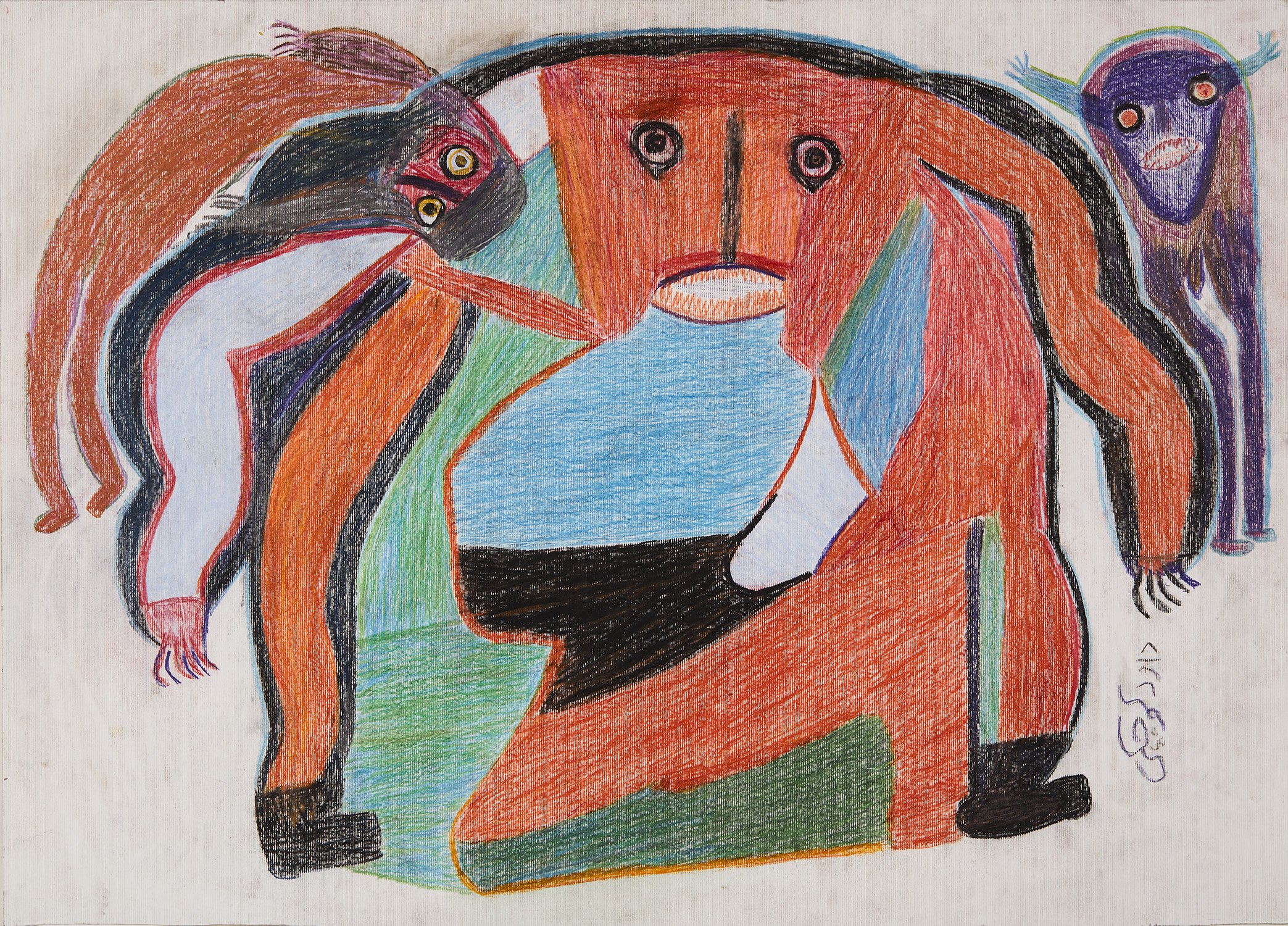Davood Koochaki was born in 1939 in the province of Gilan in Northern Iran and died in Tehran in 2020. His life wasn’t easy. At the age of six he dropped out of school to help his family work in the rice paddies they maintained for others. He toiled extremely hard all his life and saw drawing as his late occupation. Although illiterate, he remained intellectually engaged with the world, always seeking out creative people to talk to.
He moved to Tehran when he was 13 and eventually became an auto mechanic, marrying and raising a family. He began to draw in his 40s but did not pursue it seriously till he was in his sixties.
He grew up surrounded by the rich Persian folklore which animated the daily war between Good and Evil, often using animals to symbolize moral forces, for example snakes as symbols of evil and birds as signs of good omens. Nature was the stage for playing out the eternal stories of struggle.
We can see this movement of forces in most Koochaki drawings. Like other Art Brut artists, he allowed his memories, anxieties, dreams fears, and joys as well to come to the bidding of his drawing hand. He didn’t talk much about the precise meanings and symbols in the drawings, but his process was time-consuming and was a way of conquering time and letting it pass.
What makes Koochaki so great is his ability to voice nightmares and the good points of humanity at the same time. We are beings of contrasts and inconsistencies; we contain multitudes. We suffer and triumph, often simultaneously. Koochaki was a visual storyteller. He laughed and talked whether he drew dark or light subjects. He would often regard his finished drawings with bemused surprise, as if caught off-guard by his own intensity. Indeed, Koochaki was as amazed by what appeared on the paper in front of him as anyone. Davood Koochaki put his demons and angels into a personal visual language that is unique in our field, as if they were painted on the cave walls of his haunted memories. Like all our anxieties they loom and move in a dance.





